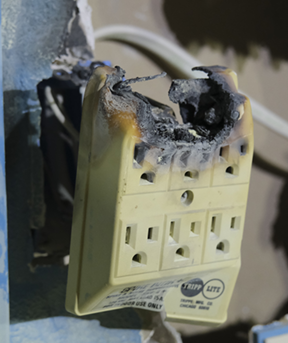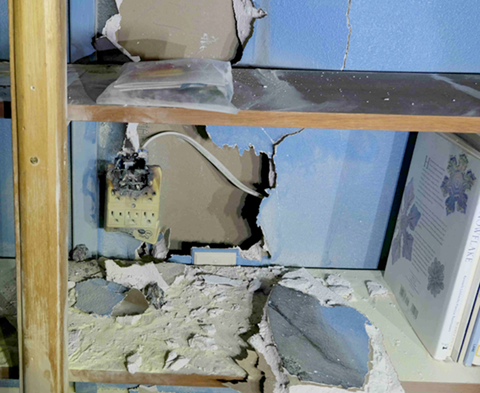When Seconds Count: Lessons Learned from a House Fire

By Karen Ronning-Hall, Cedar Hills Ready!
Did you know that home electrical fires are a top danger in the winter? What would you do if you smelled smoke in your house, but you and the fire department couldn’t find the source? My husband Bill and I are the cofounders of Cedar Hills Ready!, a local disaster preparedness group. We found ourselves in this challenging situation early this year. Our story—how neighborhood readiness helped prevent a potentially devastating fire—underscores the importance of community preparedness.
On January 4, we were going about our routines when we heard a loud boom coming from outside our house. The house lights flickered and dimmed. Geneva Hall, our daughter, noticed a fireball fly off the powerline connected to the back of our house. An odor of burnt electronics and plastic filled the house.

The lights continued to flicker as we searched the house and yard for a potential fire without success. We noticed strange symptoms in our house electrical system. For example, turning the switch on the toaster oven made the kitchen lights go dim. Microwave was dead.
We called PGE for a technician, and we were told that it could be days before somebody would respond. Then we noticed a smokey haze building up in the basement but we couldn’t find a source for the smoke. We called 911 for assistance from Tualatin Valley Fire & Rescue (TVF&R).
Electrical fires are the second leading cause of house fires, accounting for an estimated 51,000 fires each year, with more than 500 deaths, 1,400 injuries, and $1.3 billion in property damage annually, according to the Electrical Safety Foundation International (ESFI). Nearly half of all electrical fire deaths occur in the winter months, spanning December through March, according to the United States Fire Administration (USFA) estimates.
Electrical fires can be hard to detect because they can smolder inside the walls near electrical receptacles. That is what happened at our house. TVF&R spent over an hour clearing and searching the source of the smoke. They checked the walls for heat using a thermal imaging camera. They found no source for the smoke.

To find out what happened next and the lessons we learned from the fire, check out our two fire preparedness blog articles: “Surviving the electrical fire” describes what happened during the house fire—the signs and symptoms of an electrical fire—and what we did to survive. “Six lessons learned from our house fire” describes what was learned that might benefit you. We share tips about the skills, knowledge, and preparation that mattered the most during this emergency.
Do you want to improve your preparedness skills in a playful way? Register and join us for an educational and fun Disaster Scenario Game happening on Monday, April 17, 6:30-8:30 pm at the Cedar Hills UCC at 11695 SW Park Way. Everyone is welcome, and it’s free. No prior knowledge required.
Questions? Visit us at visit us at cedarhillsready.org The mission of Cedar Hills Ready! is to create caring, connected, and resilient neighborhoods. We are committed to making sure every neighbor is prepared and has the best chance of survival in the event of a disaster.





